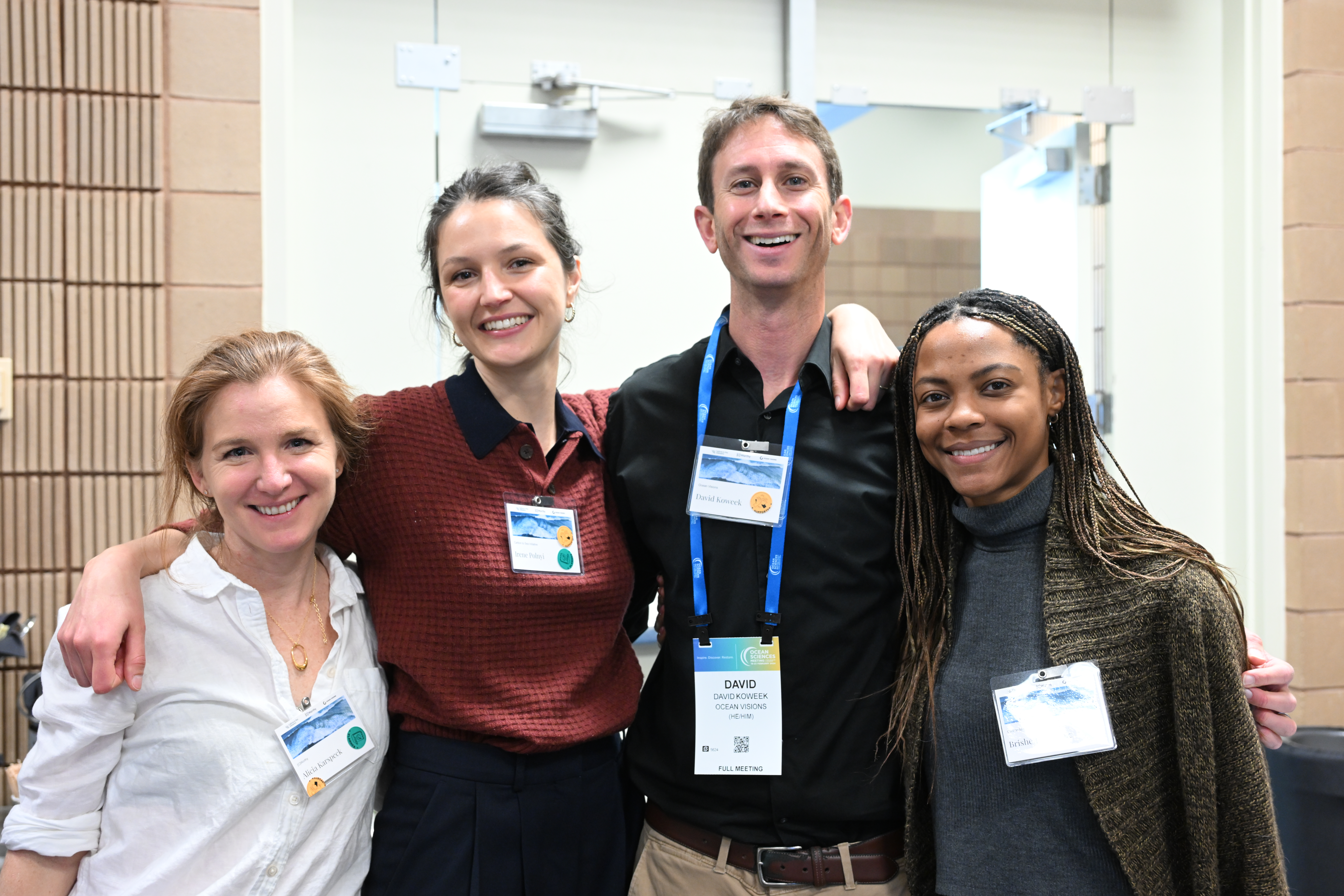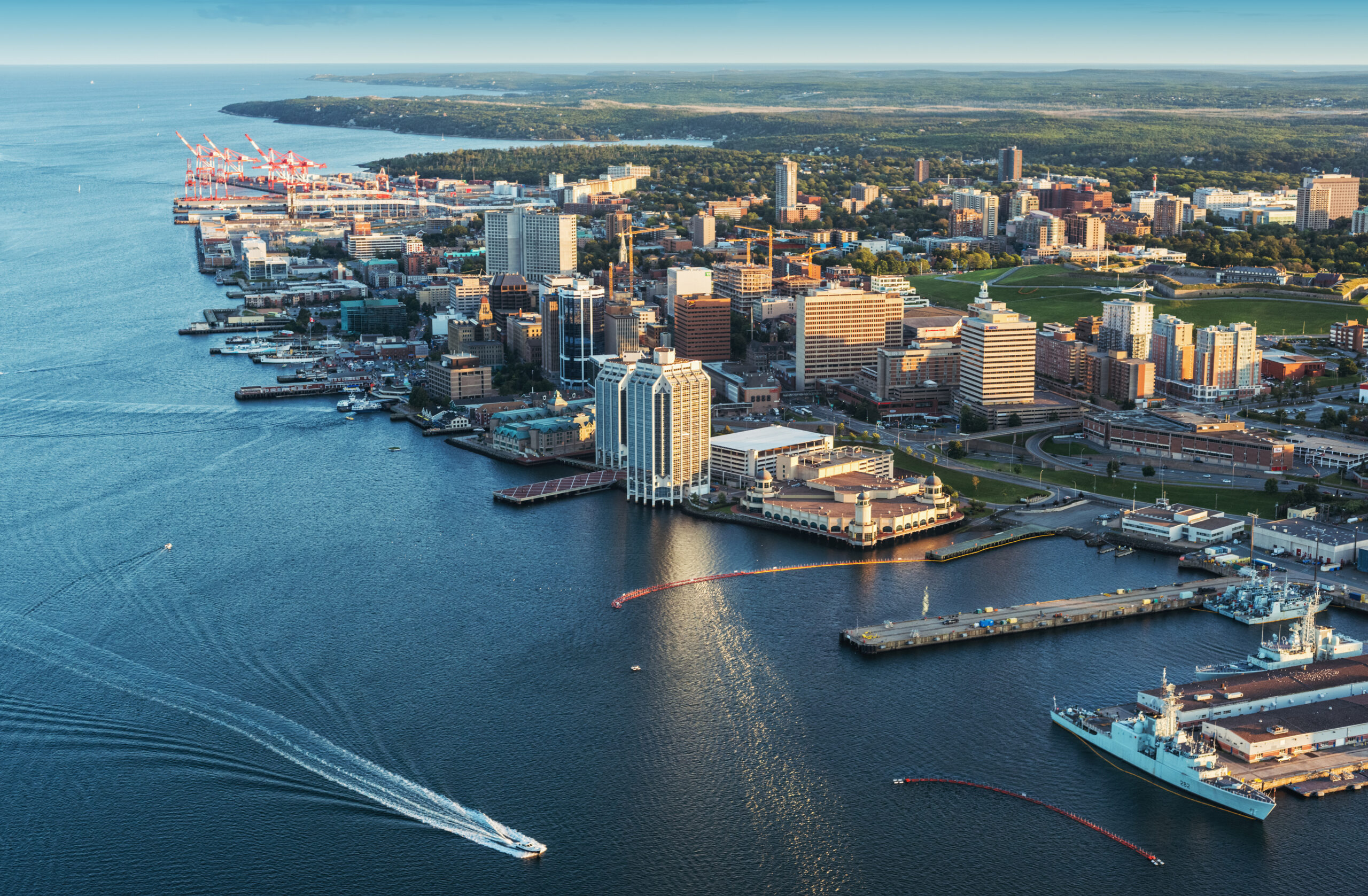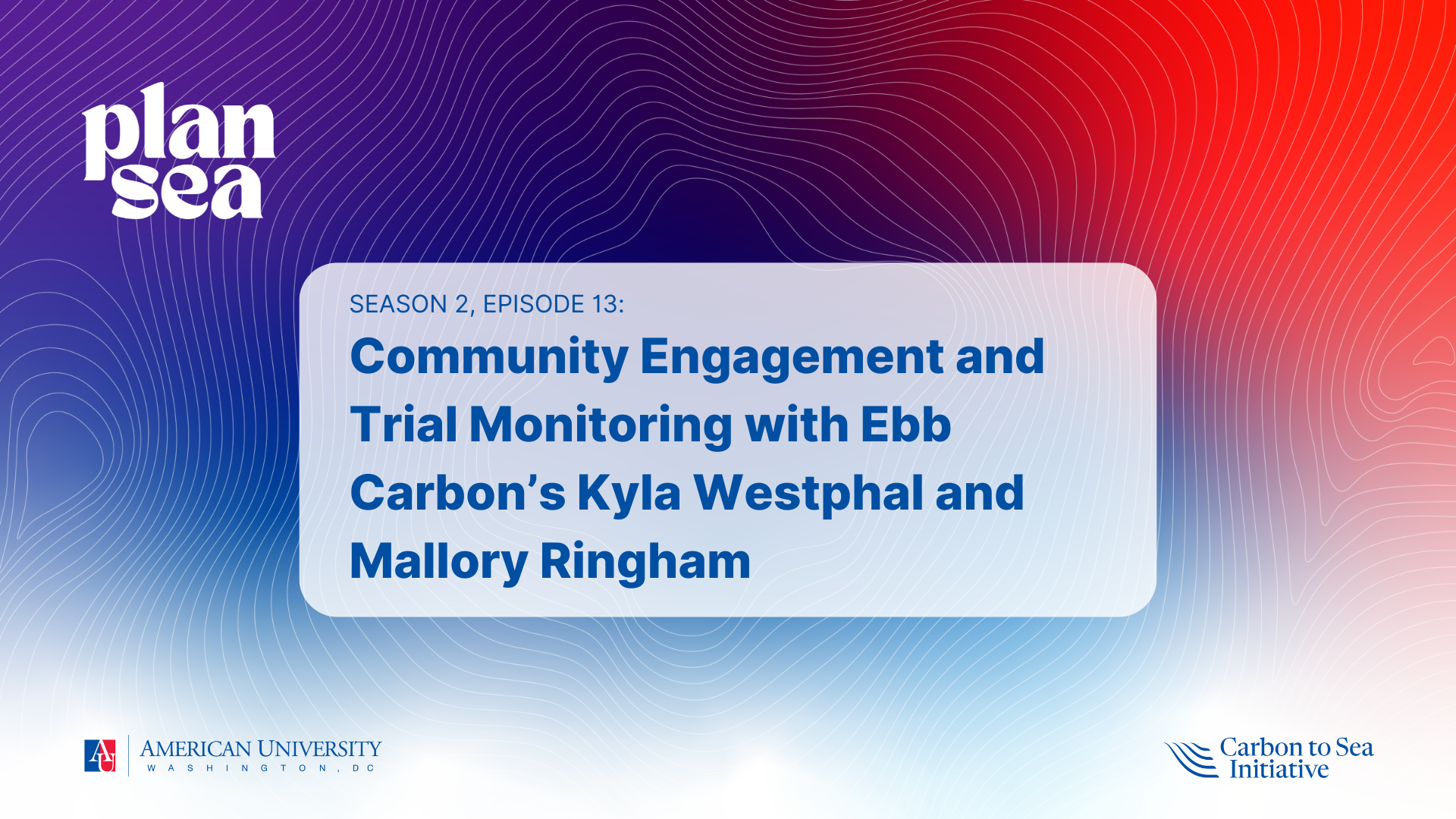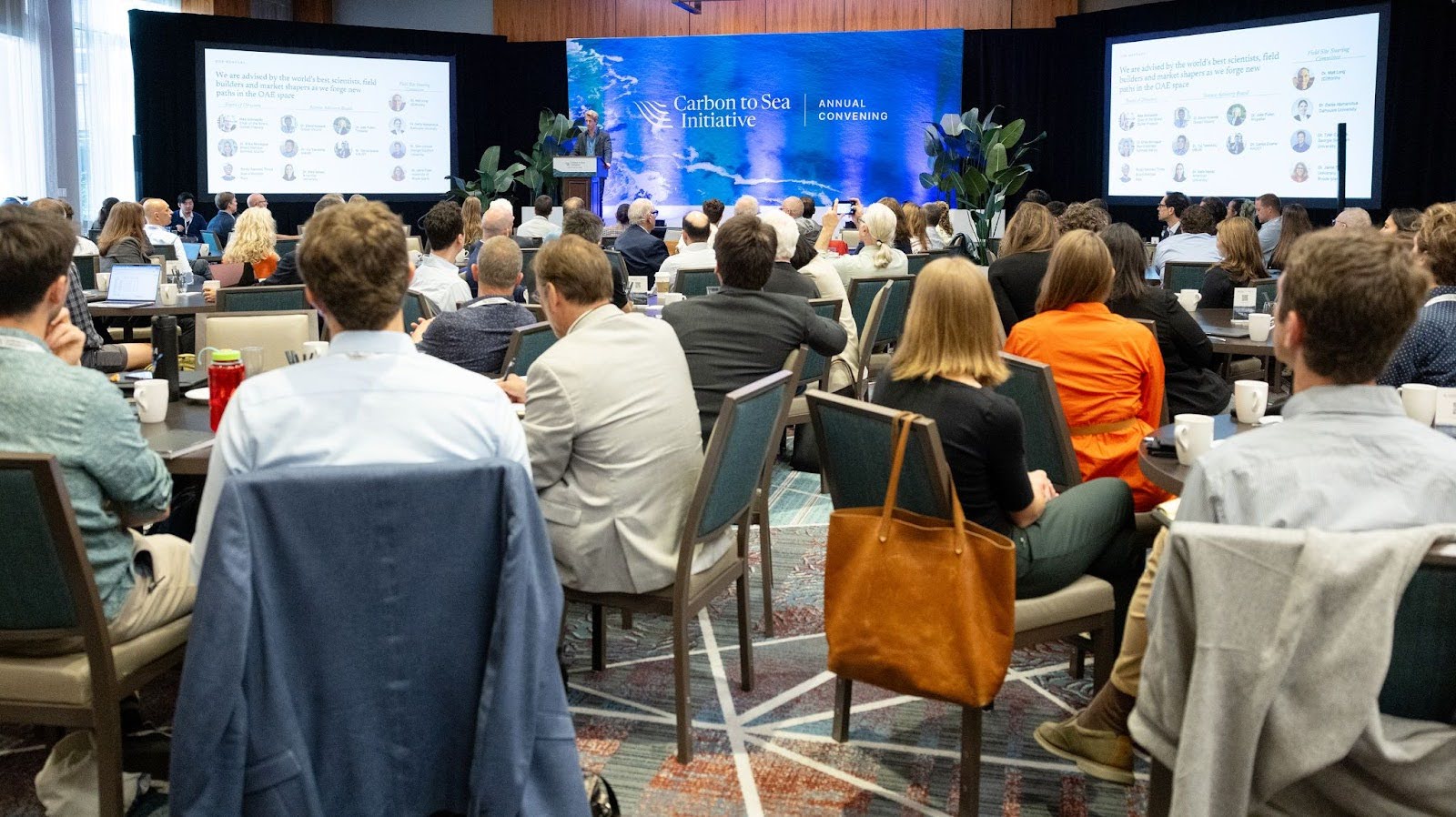Last weekend, Carbon to Sea hosted a workshop at the AGU Ocean Sciences Meeting in New Orleans, in partnership with Ocean Visions and [C]Worthy. We had more than 75 attendees, including field researchers, policy experts, community partners, funders, and regulators — all advancing ocean-climate solutions in their own ways.
We focused on the work underway to conduct field research, which is a key step between theory and implementation, providing the oCDR field with valuable information about what works and what doesn’t.
Our workshop built on several recent developments:
- The U.S. government’s National Oceanographic Partnership Program, which awarded more than 23 million in support of advancing the knowledge base needed to advance oCDR, including 5 projects that include field research;
- The recently published Guide to Best Practices in OAE Research, which includes a chapter on field research work; and
- Ocean Visions’ mCDR database that provides a comprehensive overview of over 40 field research efforts.
Given all of this progress in the field, the goal of this workshop was to build community and share early lessons learned. The workshop was split into two parts, each adding to our collective body of knowledge on conducting OAE field research.
First, attendees split into groups to elaborate on their plans to conduct, support, or inform field trials. Takeaways included:
- Eight teams reported that they were involved with field trials starting as early as 2022 and scheduled through 2025. Half of the respondents had gotten permits approved, scheduled a trial, or were operational, while another half were in the planning or designing phase.
- The teams are primarily interested in demonstrating proof of concept, quantifying carbon removal, and assessing environmental safety and effects of their trial. However, many of these teams are going into deeper investigations to test a new system of MRV, derisk their technology, assess costs of operation, and build best practices for future OAE trials.
- Twelve other teams elaborated on how their public, private or nonprofit organizations aim to support field work either through funding, MRV instrumentation, data products, best practice guidance or regulation.
During the second part of the workshop, Ebb Carbon, Ocean Alk-Align, Planetary Technologies, and Vesta shared insights on how they’ve approached their active field research. We’re grateful to each partner for sharing their insights, because they’re all pursuing OAE in distinct ways and contribute significant knowledge to our field. They each had their own experiences, but there were some relevant lessons for the whole field:
- Research locations with rich existing baseline data helped researchers get a head start on understanding the characteristics of their site. Without these baselines, they recommend starting data collection as soon as the location is selected to paint a seasonal picture of your site.
- Investing in deep levels of education at all levels is essential, because this field is new and stakeholders and regulators considering your permit have few resources to evaluate the benefits of your trials and the veracity of a particular MRV approach.
- Taking the time to articulate the bigger motivations behind your work and the strengths of the location help bring stakeholders along on your journey.
- Logistical challenges of daily measurement and weekly regulatory reporting — which require a lot of manpower and organization — should not be underestimated.
- MRV is challenging – time consuming, expensive, and difficult within natural variability — but it’s possible. Our field trial practitioners achieved the measurement goals of their trial!
- Building “safety culture” is essential as you move from lab to trials with higher volumes and new processes and measures to be considered.
Conducting OAE research in the real world is new territory for all of us, but the early results show a lot of promise — including demonstrating and quantifying CDR and demonstrating little to no discernible change in ecologies. All of this underscores the high potential OAE has to help address our climate crisis, and the continued importance of MRV.
Field research is fundamentally a scientific endeavor – but successful field research will also include careful logistical planning, thoughtful stakeholder engagement, and open lines of communication in the local community hosting the research.
We were grateful to convene so many partners doing innovative research, and we want to thank everyone who contributed to our workshop’s success by being open and welcoming other perspectives. Carbon to Sea is inspired by the great work being done in the field, and we look forward to continuing to learn alongside the field.



